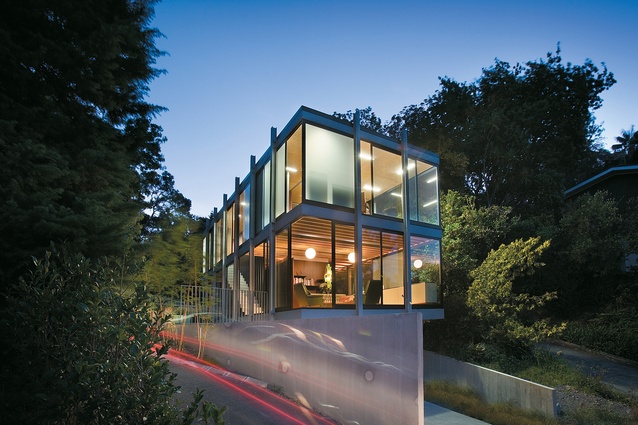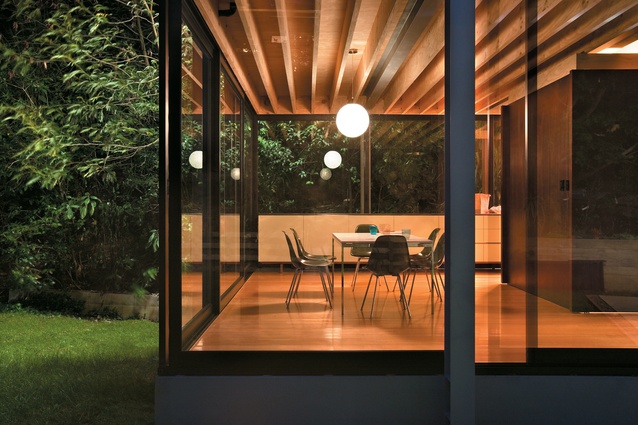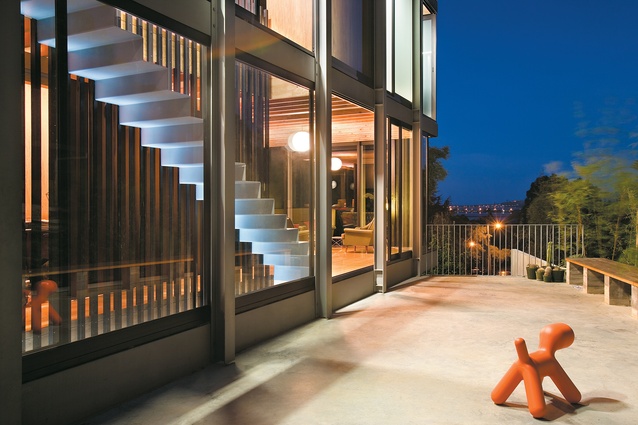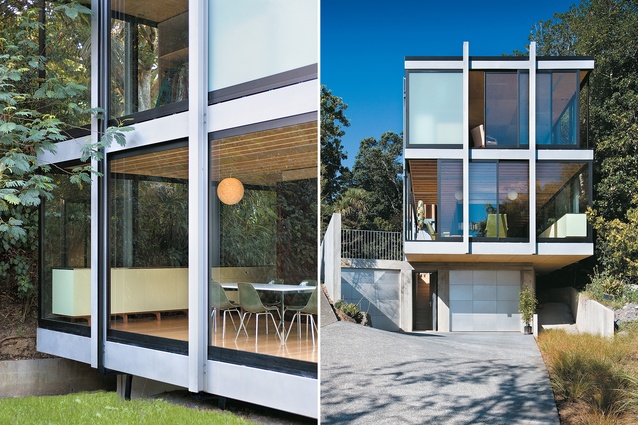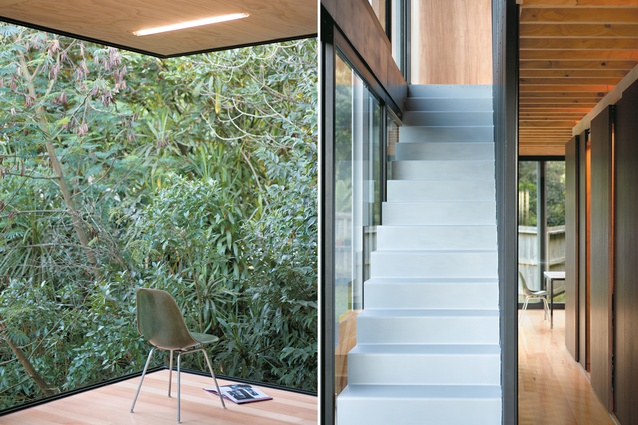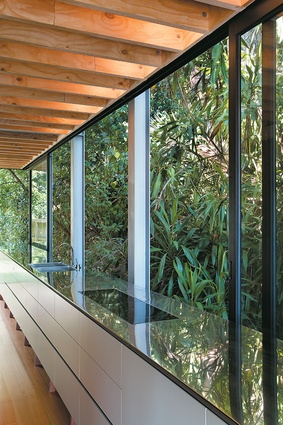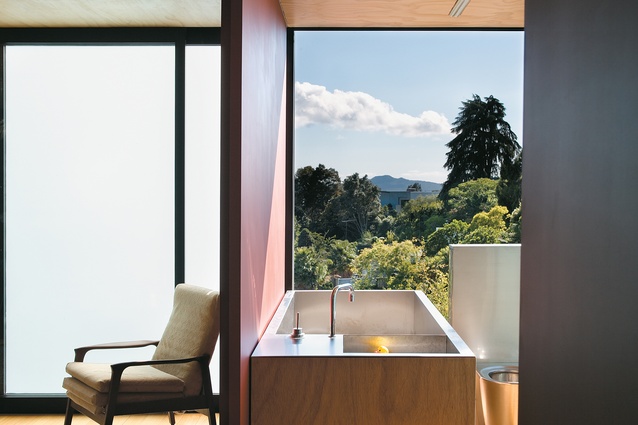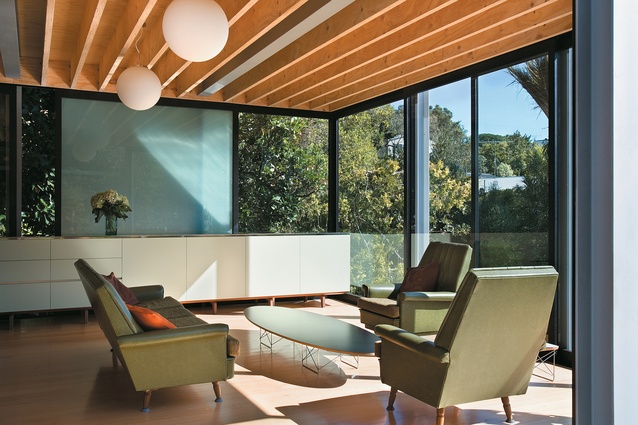Houses Revisited: Free spirit
Apparently transparent but surprisingly private, in a famous tradition but hardly traditional, this Remuera house from 2007 is cool, calm and clever
The glass house epitomises Modernism: wide open, free and flexible, open to light and nature. But even famous examples such as Philip Johnson’s Glass House and Mies van der Rohe’s Farnsworth house have been notoriously uninhabitable, more temples to modern principle than dwellings. Modernism has of course been long since gutted of principle and at first glance this house on the edge of Remuera may seem like another exercise in Auckland retro-modernism.
But once inside, it reveals itself as one of the most interesting and bravest houses I’ve seen in a long time. In the true spirit of the glass house it tosses all assumptions into the air. It experiments with new arrangements and posits alternatives as to how we might live in our houses today.
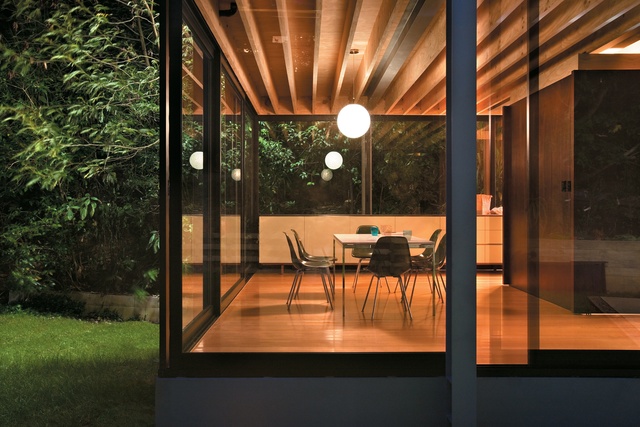
Architect Richard George has designed for his family a long, two storey rectangle cantilevered over a roughly formed concrete basement and garage, dug into a sloping site. From this raw subterranean space, subtly lit by slivers of skylight, we climb a finely folded timber stair to the glass box. And this really is a glass box – there is not a single solid external wall. The entire two floors are sheathed in large panels of glass, every one of which slides.
The two storeys of glass are supported by steel columns on the outside of the building, so as to free up floor space and express structure in the true Modernist spirit. The whole box appears poised; it floats in space at the very top of a street which runs off down to the harbour. Even to the east, there is no easy indoor-outdoor flow to the concrete terrace, rather the house is poised a good half metre above. This is similar to the Japanese manner that treats the house floor as a living platform to sit upon, as opposed to the more prosaic western floor we are used to clomping round on.
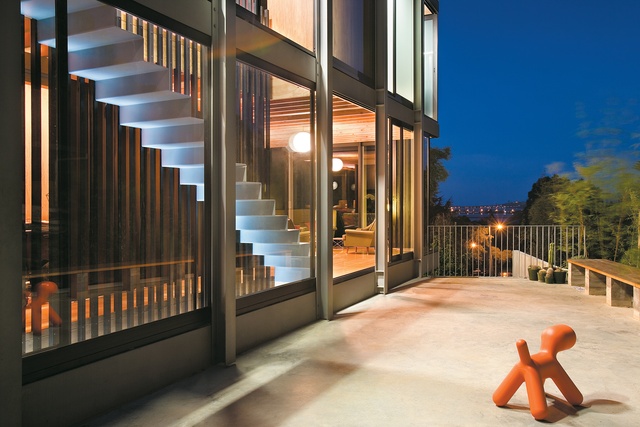
There is a pragmatic reason for this elevation, as well: an overland flood path requires the house to be a good distance above ground and on the western side a concrete path acts as a sluiceway to channel floodwater around the property. But Richard George’s approach is to treat these issues as opportunities for innovative design, rather than as problems stymieing more conventional solutions.
The lower floor of the glass box – the living area – has no internal walls, but a central core sheathed in sliding and bi-folding timber panels, all of which open to reveal small alcoves. These screened-off spaces are receptacles for office, computer, storage and other clutter. Along the western side a 14-metre stainless steel bench with cupboards runs from end to end of the house.
The cupboards conceal stereo and television at one end and, where the bench runs past the core, a galley kitchen is formed. Because the bench has no splashback the glass walls behind it can slide aside to open up the house to a glade of cabbage trees and karaka, to cool air and the scent of the bush. Dappled sunlight is reflected in the stainless benchtop – it feels as though the side of the house has dissolved and we are outside.
The house is pared back, the joists are exposed, there isn’t a skerrick of plasterboard in the building, but it’s not a minimalist house. It’s more bach-like: simple, formulated around the needs of daily living rather than aspiring to match the slick pads and lifestyles we see paraded in the glossy magazines. It has the honesty of Donald Judd’s work and of Charles and Ray Eames’ own house in California.
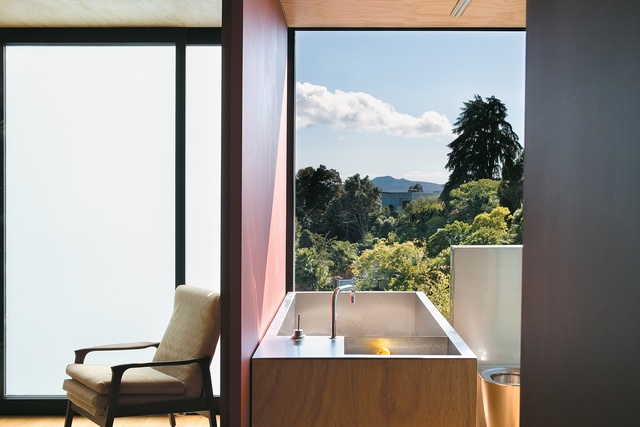
The upper storey is even more remarkable. A long line of sliding timber panels run end to end with sliding shelf and cupboard units at right angles. There are no fixed rooms, but the movable panels and units allow a variety of rooms of different sizes to be arranged and changed at any time. In an eastern corner at each end of the floor is a cluster of freestanding plumbing fittings: stainless toilets and basins, shower and bath. These areas can be entirely opened up to the other rooms or closed off with the sliding panels. Sliding opal glass panels on the exterior allow these bathing spaces to open up to a dreamily distant harbour or be chastely screened from public view. Despite appearances, this is a surprisingly private house, infused with the Zen calm of the Japanese.
Glass has always been the wonder material. As long ago as 1914 the German writer Paul Scheerbart stated in his treatise Glass Architecture that he was sure the “new glass environment will completely transform mankind”. The stuff is so ubiquitous these days it has lost its magic, and especially in our climate one can question such expansive use of it. However, the multitude of sliding panes in the George house allow all manner of combinations for ventilation, rather like the contemporary Samoan falé which has preserved traditional form but embraced tin and glass. Richard George also has plans for a series of slatted panels, alternating vertically and horizontally, that could wrap the entire structure adding another layer of woven skin.
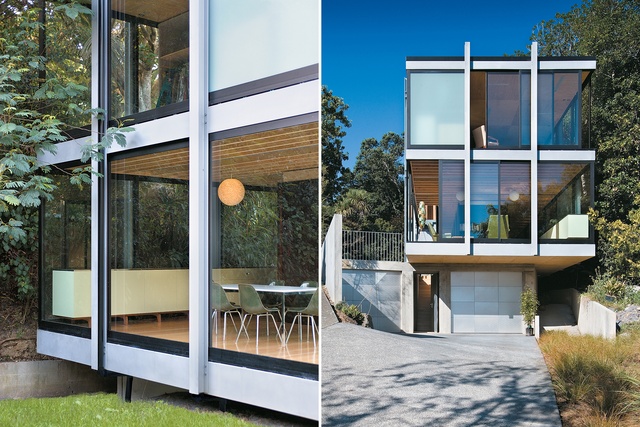
For all its apparent rigorous simplicity, this is a house rich in ideas. It is a design that mixes together international influences but also the local with sly references to the singular volume of the shed and the metaphorical ribs of the meeting house and its tukutuku panels. It reminds me of others of Auckland’s Modernist-inspired pavilions, such as Rigby Mullan’s wonderful Greer Frith house (1959-60) at the Swanson end of West Auckland’s Scenic Drive and Mark Brown & Fairhead’s ‘House for the Sub-Tropics’ (Titirangi, 1956).
This glass slipper is a challenging and accomplished house, one of the most intriguing and stimulating that I’ve seen for years. At a time when we have no real belief anymore in architecture as a social and cultural force, and when our houses have become commodities that serve the market and subsume themselves to the ideals of increasingly untenable lifestyles, it is refreshing to come across real architecture that embraces international influences but also explores how we might live in our own little corner of the South Pacific.
Click here to see more Houses Revisited. And sign up to our email newsletters to receive Houses Revisited straight to your inbox.
Note: These are stories from our archives and, since the time of writing, some details may have changed including names, personnel of specific firms, registration status, etc.

